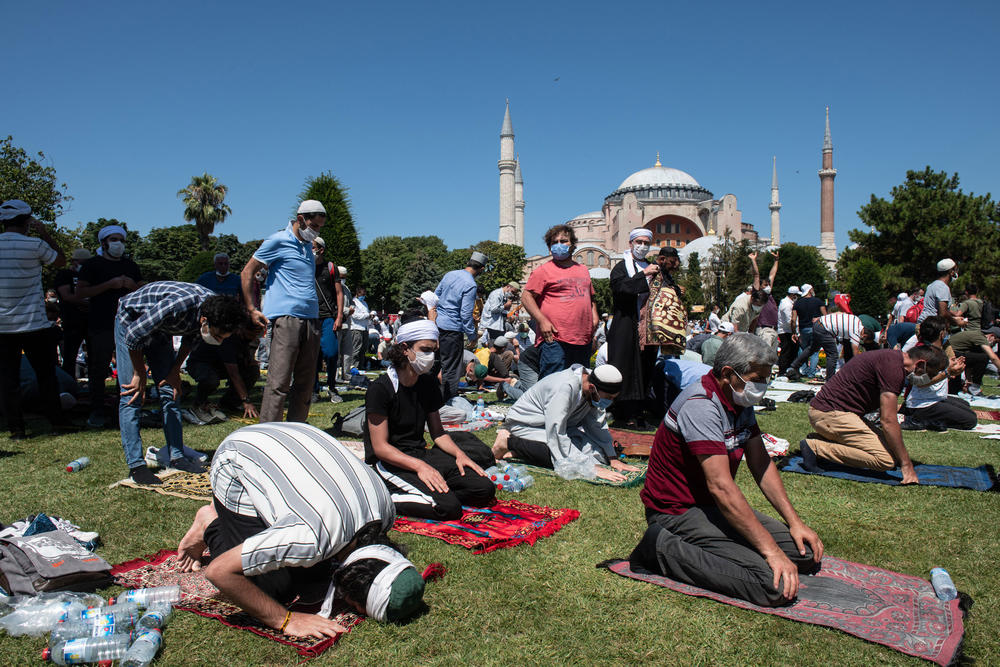Section Branding
Header Content
Hagia Sophia Hosts 1st Friday Prayers Since It Was Turned Back Into A Mosque
Primary Content
Thousands of people attended prayers at Istanbul's historic Hagia Sophia on Friday, completing the famous building's conversion from a secular space into a Muslim house of worship. It had been a museum for more than 86 years.
The crowd was large with people spilling outside and into a plaza and grassy areas near the sixth century building that is revered by both Muslims and Christians. Turkish President Recep Tayyip Erdogan sat front and center, removing a white face mask to recite passages from the Quran as he sat on a blue carpet.
Erdogan's decision to convert the landmark — a UNESCO World Heritage Site — from a museum back to a religious building has been controversial. The Hagia Sophia has long been hailed as a symbol of the coexistence of Christianity and Islam, a cultural junction between East and West.
Its architecture reflects its unique status with the famous dome ringed by minarets. Inside, intricate mosaics and art depict both Christian and Muslim symbols. But after a court revoked the Hagia Sophia's status as a museum earlier this month, Erdogan immediately ordered the mosque conversion.
On Friday, crowds of worshippers were generally calm and quiet. A large media contingent was on hand, complete with satellite trucks and a scaffolding set up to give TV live positions a view of the Hagia Sophia. People who thronged the plaza and nearby spaces could watch the ceremony and prayers on large video screens.
Many local shops were closed for Friday prayers. Owners of those that were open were generally supportive of the change, saying they hope it will bring more visitors to the Sultanahmet area of Istanbul's Old City.
In brief interviews in the area, several people mentioned Mehmet the Conqueror, who originally ordered the conversion of the Hagia Sophia from a Byzantine church to a mosque after the Ottoman Empire seized the city of Constantinople in 1453.
After Erdogan attended the prayer service at Hagia Sophia, he went to another mosque nearby — one that is named for Mehmet the Conqueror.
The architectural marvel was turned into a museum in 1934 by a decree from the Cabinet of Turkish leader Mustafa Kemal Ataturk.
Earlier this month, UNESCO said it "deeply regrets" Turkey's decision" to declare the Hagia Sophia a mosque, urging local authorities not to alter the structure or restrict access.
"Hagia Sophia is an architectural masterpiece and a unique testimony to interactions between Europe and Asia over the centuries," UNESCO Director-General Audrey Azoulay said. "Its status as a museum reflects the universal nature of its heritage, and makes it a powerful symbol for dialogue."
Erdogan said on Friday that the Hagia Sophia Grand Mosque will be a place that "people of all religions can visit," according to the president's website. It adds that the site "will continue forever to serve all the believers as a mosque."
Copyright 2020 NPR. To see more, visit https://www.npr.org.




